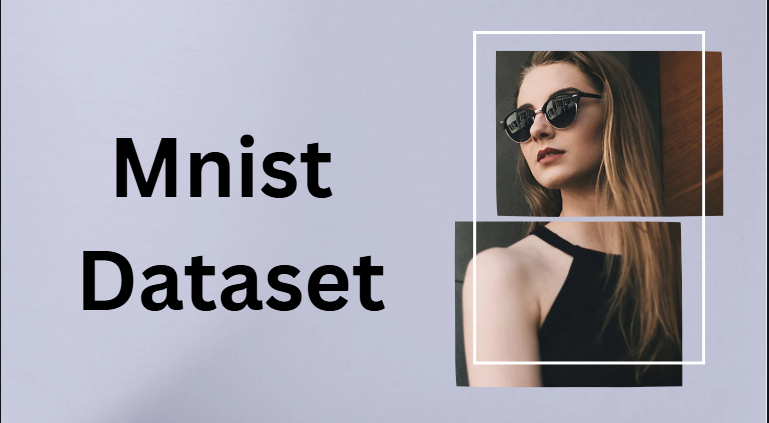The MNIST dataset is one of the most famous datasets in the field of machine learning and deep learning. It is widely used for training and testing image processing systems and neural networks. Even though it is simple, it has helped thousands of learners and researchers understand how image recognition works.
In this article, we’ll explore what the MNIST dataset is, how it is used, and why it is so important. We’ll also cover its structure, applications, and frequently asked questions.
🥇 What Is the MNIST Dataset?
The MNIST (Modified National Institute of Standards and Technology) dataset is a large collection of handwritten digits from 0 to 9.
It was created by combining samples from NIST’s original datasets and making them easier to use for machine learning experiments.
Each image in MNIST is a 28×28 grayscale picture of a handwritten number, meaning each pixel is represented by a single intensity value from 0 (white) to 255 (black).
The dataset contains:
- 60,000 training images
- 10,000 test images
These images are labeled with the correct digit, making it a supervised learning dataset.
🥈 Why MNIST Dataset Is So Popular
The MNIST dataset is often called the “Hello World” of machine learning. It’s simple, small, and very effective for beginners.
Here are some reasons why it’s so popular:
- Easy to Use – It is available in many formats (CSV, NumPy, TensorFlow, PyTorch, etc.).
- Well-Labeled – Every image is already labeled with the correct number.
- Balanced Data – Each digit (0–9) appears almost the same number of times.
- Fast to Train – Even on normal computers, models can be trained quickly.
- Benchmark Standard – It’s used to compare the accuracy of different machine learning models.
🥉 Structure of the MNIST Dataset
Each sample in the dataset includes two main parts:
- Image Data
- 28×28 pixel grayscale image
- Flattened into a 784-dimensional vector (28×28=784)
- Label Data
- A number between 0 and 9 that represents the correct digit in the image
Example:
An image of a handwritten “7” will have a label of 7.
🏅 How to Download and Load the MNIST Dataset
Most popular machine learning libraries provide built-in access to the MNIST dataset.
🔹 Using TensorFlow
from tensorflow.keras.datasets import mnist (x_train, y_train), (x_test, y_test) = mnist.load_data()
🔹 Using PyTorch
from torchvision import datasets, transforms train_dataset = datasets.MNIST(root=’./data’, train=True, download=True, transform=transforms.ToTensor()) test_dataset = datasets.MNIST(root=’./data’, train=False, download=True, transform=transforms.ToTensor())
Both examples automatically download the dataset and prepare it for use.
🏆 Applications of the MNIST Dataset
Even though MNIST is a simple dataset, it is used in many ways to test models and algorithms.
1. Image Classification
Used to train models that can classify digits from 0–9.
2. Neural Network Practice
Helps beginners understand how artificial neural networks work.
3. Algorithm Comparison
Researchers test the performance of models like CNNs, SVMs, and KNNs on MNIST.
4. Computer Vision Education
Used in tutorials and courses for teaching deep learning.
5. Preprocessing Experiments
Students and developers test data normalization, noise removal, and other techniques.
🧠 How MNIST Helps in Learning Deep Learning
The MNIST dataset is a perfect starting point for learning about neural networks and deep learning.
It helps you understand key concepts such as:
- Input layers and output layers
- Activation functions
- Training and testing data
- Accuracy and loss
Because the dataset is small and clean, it allows learners to focus on concepts instead of dealing with messy or large data.
🧩 Common Models Used with MNIST
Here are a few common models used to classify MNIST digits:
- Logistic Regression – Simple but effective for basic accuracy.
- K-Nearest Neighbors (KNN) – Classifies digits based on distance between images.
- Support Vector Machines (SVM) – Separates digits using hyperplanes.
- Convolutional Neural Networks (CNNs) – Provides the best accuracy for image tasks.
- Deep Neural Networks (DNNs) – Learns deeper and complex patterns.
Among these, CNNs usually perform the best, reaching more than 99% accuracy on the test data.
📈 Performance Metrics
To check how well your model performs, common metrics used with MNIST are:
- Accuracy – Percentage of correct predictions
- Confusion Matrix – To visualize correct vs incorrect predictions
- Loss Value – How much error the model still makes
These metrics help fine-tune models and improve performance.
⚙️ Challenges and Limitations
Even though MNIST is great for learning, it has some limitations:
- It’s too simple for modern deep learning systems.
- Real-world images are more complex than handwritten digits.
- It doesn’t include color or different backgrounds.
That’s why advanced datasets like Fashion-MNIST and CIFAR-10 are now used for more complex testing.
✅ Conclusion
The MNIST dataset is one of the most important datasets in the history of machine learning.
It is small, simple, and extremely useful for understanding image recognition and model evaluation.
If you are new to data science or deep learning, MNIST is the best place to start your journey. Once you master it, you can move on to more advanced datasets and projects.
FAQs
1. What does MNIST stand for?
MNIST stands for Modified National Institute of Standards and Technology dataset.
2. What type of data is in the MNIST dataset?
It contains handwritten digits from 0 to 9 in 28×28 grayscale images.
3. How many images are there in MNIST?
There are 60,000 training images and 10,000 test images.
4. Why is MNIST used in machine learning?
It’s simple, labeled, and ideal for learning image classification and neural network basics.
5. Which model gives the best results on MNIST?
Convolutional Neural Networks (CNNs) give the highest accuracy, often above 99%.
6. Is MNIST still useful in 2025?
Yes, it’s still very useful for learning and benchmarking, though not for real-world complex tasks.

